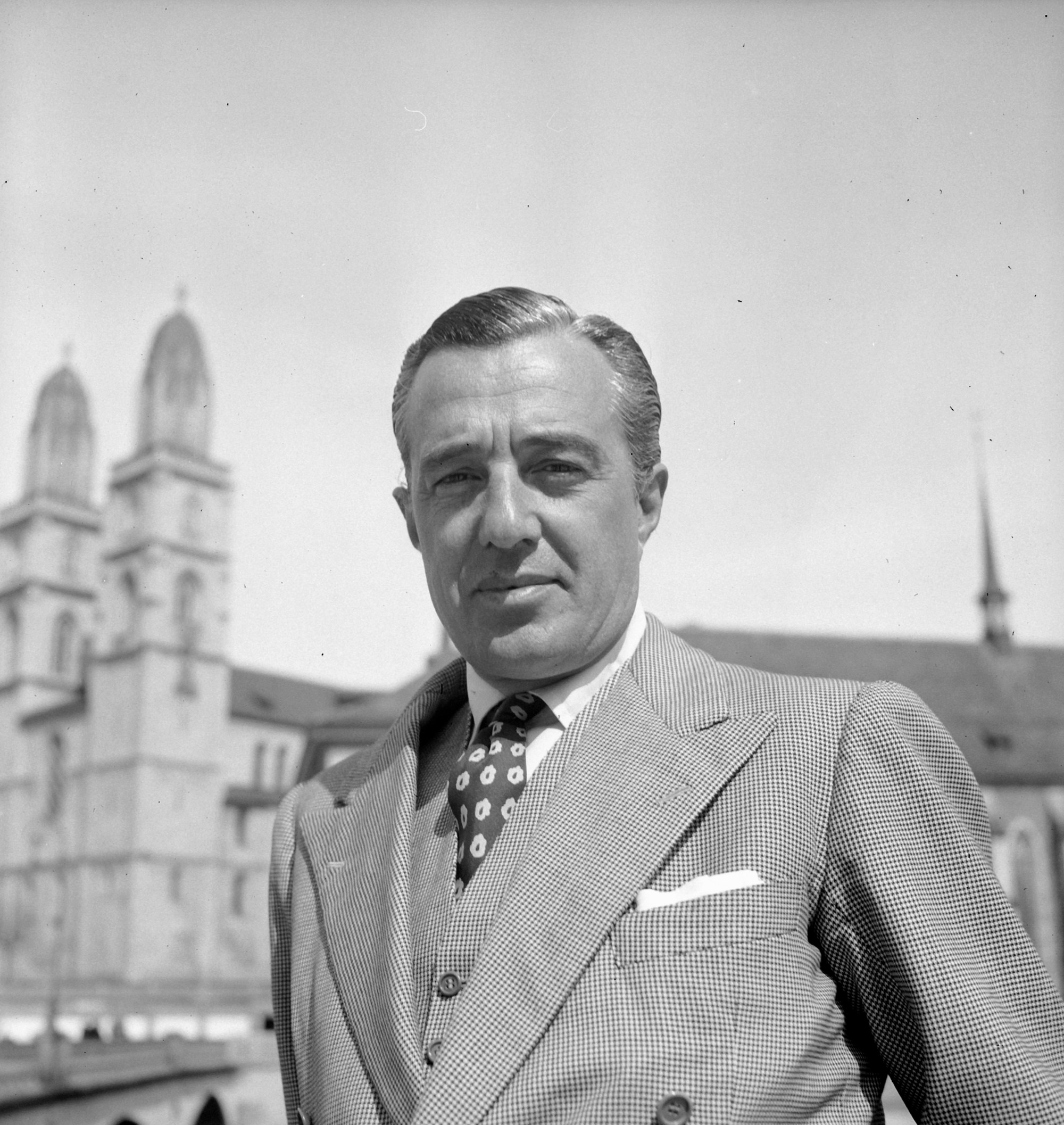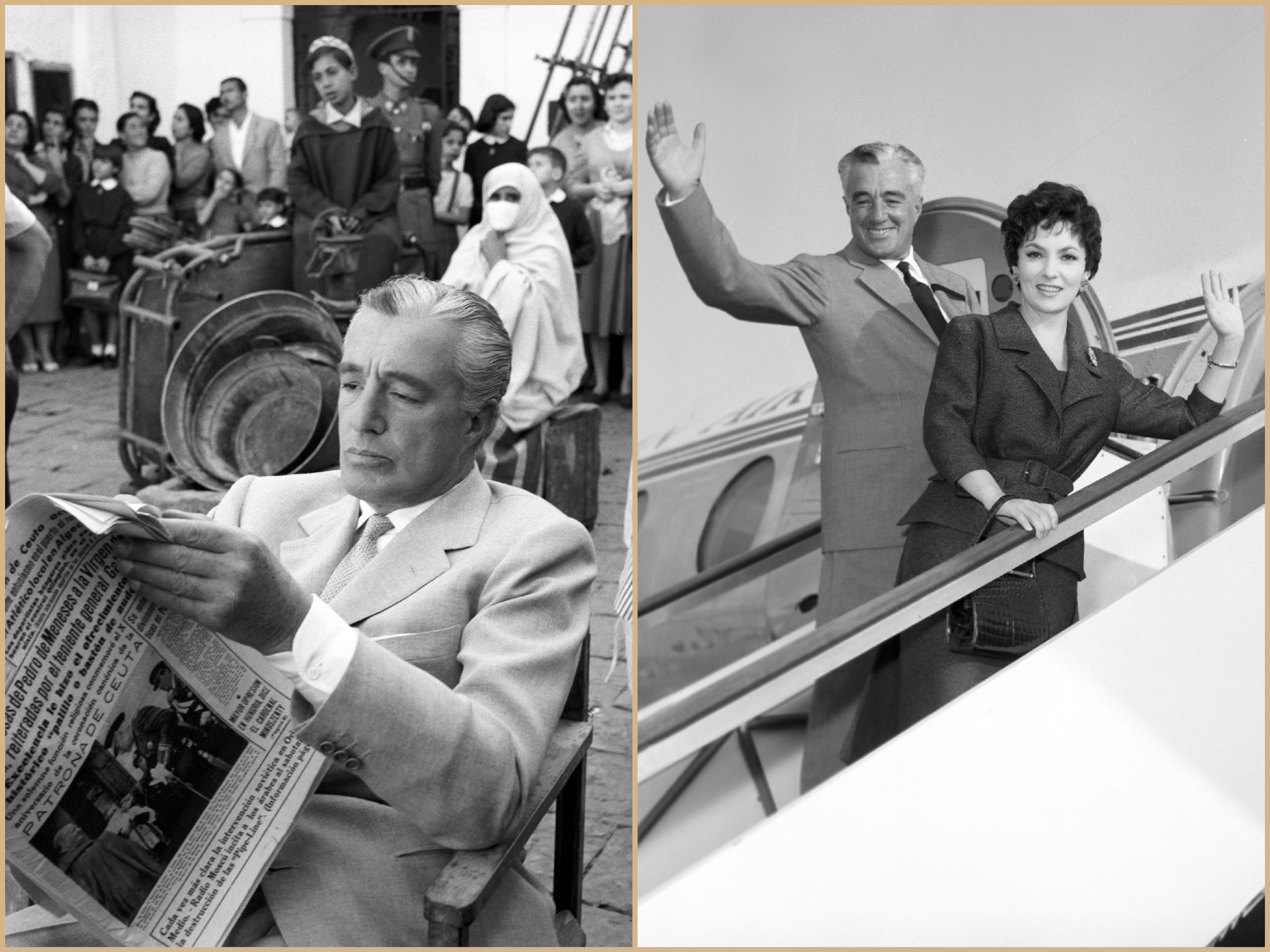
- Film
Filmmakers’ Autobiographies: Letters From Vittorio De Sica
“June 15, 1964: I just got a request from America to publish my diaries. But I never wrote them with any literary ambition, and since I do not consider myself a writer, I had no wish to publish them. Nonetheless, I find amusing the idea for the audience to realize what goes on behind the making of a film and the laborious work it requires.”
So wrote neorealist maestro Vittorio De Sica in a letter to his 26-year-old daughter Emi. One of the many she received and compiled in « Cara Emi, sono le 5 del mattino… Lettere dal set », published in Italy in 2014. 40 years after his death at 73, she wanted to share the no-filter state of mind of her father at work. “Dad was a very modest man,” she explains in the foreword, “and in spite of all his multiple accolades, including four Golden Globes and four Academy Awards, he started each new film with the anxiety of a beginner.”
This fascinating correspondence is a rare opportunity to discover what happened during the making of four of his films in the 60s, all starring Sophia Loren and produced by her husband Carlo Ponti. Two Women (1960), Yesterday, Today and Tomorrow (1963), Marriage Italian Style (1964), and Sunflower (1969). In those missives sent from various locations, De Sica details with self-deprecating humor, his daily activities, concerns, and frustrations.
The first ones are about the filming of Two Women, from July to October 1960, in the Ciociaria region south of Rome, where the actual story of Cesira and her 12-year-old daughter Rosetta takes place in 1944, during the tragic days of the marocchinate (mass rapes that occurred after the WWII battle of Cassino). De Sica was reuniting with Sophia Loren six years after he directed her in The Gold of Naples in a breakthrough role that helped pave her way to stardom. “Sophia,” he writes on July 29th, “is starting to become Ciociara (the movie original title) and to forget the sophisticated characters she has played during her three American years. But I have not yet been able to compel her to not make up her eyes excessively. She is happy with her role and, poverina, she has accepted my idea to play without any make-up in the last part of the film.”

The muse: with Sophia Loren on the set of Two Women, 1960; and celebrating her birthday on the set of Yesterday, Today and Tomorrow with her husband/producer Carlo Ponti and Marcello Mastroianni, 1963.
Pierluigi Praturlon/Reporters Associati & Archivi/Mondadori Portfolio via Getty Images
After several days, De Sica is satisfied with her first scenes. “Except for a few where her Hollywood habits took over, but there is nothing I can do now as they are still much ingrained in her that I feel a week will be necessary before she can triumph over those She is a very smart and good actress, and more importantly, she totally trusts me.” A bespectacled Jean-Paul Belmondo, fresh off the success of Breathless, played Michele, the man attracted to Cesira. “He is one of the cheekiest actors I have ever met,” De Sica remarks, “ I need to use all my patience and enthusiasm to have him concentrate enough to play the scene as I want him to and then he does it convincingly. Otherwise, he is distracted, he yawns and would rather be in his caravan sleeping. But he is very sympathetic and clever which compensates for his couldn’t-care less attitude.”
Usually awake by 3 AM every morning, he is constantly preoccupied with staying true to his vision. “So far,” he confesses to his daughter, “I feel I have achieved something coherent with the film, punctuated with overly dramatic moments. I have no clue if the result will be artistic though. It is an unpredictable factor and I will remain an eternal dissatisfied.” Even if he never alludes to it, he must be thinking of the commercial fiasco of The Roof, his previous film as a director four years earlier. Accused of “resurgent neorealism” by the critics at the time, he knows his reputation is on the line with Two Women. Also, on his mind: the well-publicized gambling debts that plague him repeatedly.
One day, he asked Emi if she has read an interview Fellini just gave to the daily newspaper Il Messaggero. “He belongs to a different breed. I am all modesty and generosity. He is all pretense and judgmental stinginess, especially towards me. He gives himself, Rossellini and Zavattini all the credits. But time will help put things in the right perspective.” On September 6, he notes: “This morning we went to Monte Civita to film the master shot of the chicory harvest sequence. I could not help laughing at the sight of Sophia, this international diva who each morning arrives for work in her Rolls Royce, dressed in rags and surrounded by the extras who are all real local peasants.” Overall, however, he is quite pleased with her performance, praising “her commitment to her role and strong dramatic temperament.” Adding that “her part is one of the most superb any actress could wish for.” A year later, she would win an Academy Award for her performance, and Two Women the Golden Globe for Best Foreign Film.
In the summer of 1963, Naples is the setting for the Adelina segment of Yesterday, Today and Tomorrow and for Marriage Italian Style, the following spring. Two comedies pairing Sophia Loren and Marcello Mastroianni at the top of their games. The first issue De Sica had to deal with at the start of the former? An urgent call from Carlo Ponti to find an… electric Westinghouse stove range to replace the non-working one in the princely villa he is renting with Sophia on the Posillipo peninsula! Loren played Adelina, a woman selling black market cigarettes, who keeps having children to take advantage of a law preventing a pregnant woman from being evicted. “She is the epitome of the Neapolitan and is really excellent,” he is pleased to report on September 9th.
Many scenes are filmed in the streets, attracting hundreds of onlookers wanting to catch a glimpse of the stars. Many, even the policemen in charge of crowd control, trying to place themselves in the shots. It is chaos and cacophony as De Sica admits to often losing his patience, screaming, and swearing in his megaphone to demand silence from the unruly crowds or attempting to corral dozens of chanting scugnizzi (street urchins) recruited for one sequence. Numerous delays are caused by the non-professional actors he is always prone to hire and who mix up their lines or freeze once the cameras are rolling. And there are also the constant concerns about the capricious weather changes he attempts to conjure by invoking the help of San Gennaro, patron saint of the city. Sometimes, it works. “Those who don’t know anything about movie making and its demands think that we are a bunch of pampered lazy people living a life of leisure and idleness. Whereas our job requires hard work and lots of patience. You have to have nerves of steel.”

On the set of La donna che venne dal mare and on her way to London with Gina Lollobrigida, both in 1957.
Reporters Associati & Archivi/Mondadori Portfolio via Getty Images
In Marrriage, Loren, as Filumena, must age from seventeen to her forties in a demanding part requiring a wide range of emotions and pathos that De Sica is keen to calibrate. On May 11, 1964, he cannot help poke fun at Carlo Ponti’s suggestion to put fewer close-ups of Mastroianni and more of Sophia and to stay still on those as long as possible. “But if I were to follow his advice,” he comments ironically, “it would end up with a waxen character and she would appear static and boring as in so many of the films she has done.”
In this epistolary diary, only a few sentences here and there mention Mastroianni, who is described as times as lethargic. “For him,” he confides, “work is a martyrdom.” We learn, though, of his obsession with cannellini beans! The last letters are all sent from the Soviet Union during the quite challenging filming of Sunflower in July of 1969: a first for a western production. Convinced her husband is still alive after missing in action on the Russian front during the war, Giovanna (Loren) journeys years later to the Soviet Union to find him, only to discover he has since remarried to Masha (Lyudmila Savelyeva who played Natasha in Sergei Bondarchuk’s War and Peace). Permission was granted to shoot in Moscow, on the Red Square, inside the famous Goum department store, and in Ukraine. Dealing with the red tape, the many “nyets”, new working habits and mentalities provide for more humorously entertaining vignettes. One being how fed up he and the Italian crew are with too much caviar and vodka, and their obsessive craving for pasta.
In this correspondence, De Sica’s affectionate admiration for Sophia is palpable. He is also aware of her quirks and knows how to address them in non-confrontational ways. An example in a letter dated July 14: “We started a difficult and risky scene that can easily verge on the ridiculous. Sophia is following Marcello’s wife at the train station where suddenly she sees him for the first time after all those years. We hope the audience will not snicker. Lyudmila cried for eight and Sophia for two!” Not to be upstaged, Loren wants to do another take where she cries even more but is unable to. “I intervened with my legendary patience and convinced the two to not cry at all. To just look at the camera with barely misty eyes. Not more. I wanted to see resentment in Sophia’s and anguish in Lyudmila’s. They managed but not quite 100 percent successfully.”
After one month, it is a wrap, and on July 31st, Vittorio De Sica’s relief is palpable as he ends an ultimate letter to Emi with a cheerful “Happy to see you again Italy.” He would never work with Mastroianni again and made one more film with Sophia in 1974. His last.